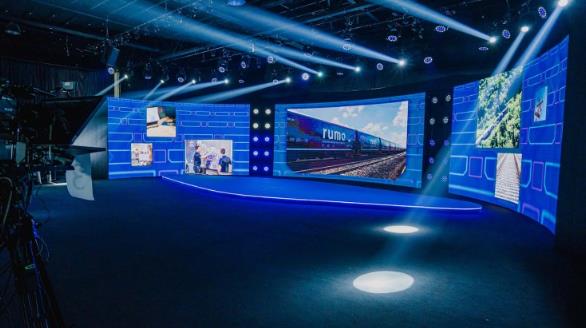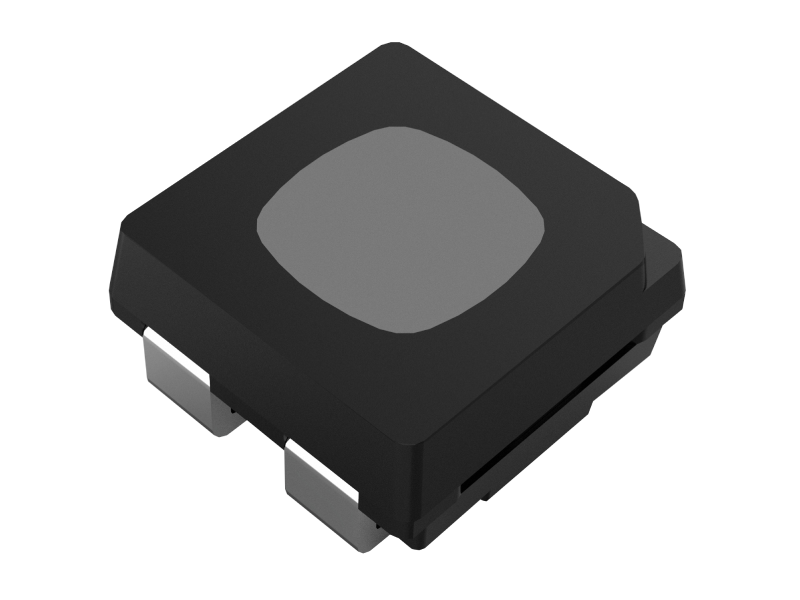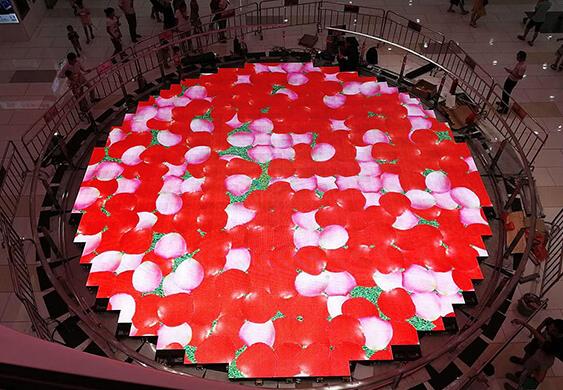LED screens have become one of the most popular display solutions on the market due to their high energy efficiency and full-scenario adaptability. So, how does an LED screen composed by LED pixels work? What types of LED screens are available on the market? What components and equipment make up a complete LED screen display system? Now, let’s proceed to below paragraphs and learn more about LED screens.

An LED screen is a type of display technology that utilizes an array of LEDs through a certain control method to create images.
Each LED represents a pixel on the screen, and the LEDs in the LED display are organized into different columns and rows to form a grid-like structure.
When specific content is to be displayed, the required image or text can be created by controlling the brightness and color of each LED.
The brightness and color of the LED can be controlled by digital signals. The control system of the display will send the input digital signal to the corresponding LED to control its brightness and color. In order to achieve high brightness and clear display effects, LED displays usually use pulse width modulation (PWM) technology, that is, by constantly switching the on and off state of the LED to control the change of display brightness.
In addition, LED displays can also use full-color LED technology, that is, combining three different colors of LEDs, red, green, and blue, to display colorful images through different combinations of brightness and color.

Kinglight provides various LEDs for both indoor and outdoor LED screen
LED screens can be designed into different types according to different application scenarios. So, what are the common types of LED display screens? Let me take a closer look at the classification of LED screens.
First of all, LED screens can be classified according to the types of colors they can display, generally including monochrome, dual-color and full-color screens.
Monochrome LED screens usually display simple information in red, green, or yellow color, and are mainly used for traffic lights, directional signs or displaying simple but important information such as phone numbers, and company names and logos, etc.
Dual-color LED screens are often used in scenarios where two types of information need to be displayed, such as the LED screens for train numbers and ticket information in the ticket hall, just like the LED screens in the hospital lobby used to display patient names and medical number information.
Full-color LED screens are also called RGB LED screens, which achieve accurate full-color display effects through different brightness ratios of the three primary colors of RGB.
Secondly, we usually classify LED screens according to where to use them, either indoors, or outdoors, or semi-outdoors.
The difference between indoor LED screens and outdoor LED screens is mainly reflected in four aspects: protection performance, pixel pitch, brightness and viewing distance.
Generally speaking, outdoor LED screens have higher requirements for protection levels and pay more attention to waterproof and dustproof designs to cope with complex outdoor environments; in addition, high brightness is also one of the important features of outdoor LED screens.
Indoor LED screens generally present images in a much closer distance, thus indoor LED screen weighs more on pixel pitch, that is, higher screen resolution, so as to obtain finer picture quality at a closer distance and avoid clearly visible LED pixels.
A semi-outdoor LED screen has combined features of indoor and outdoor LED screens. It has well balanced in pixel pitches, brightness, protection for semi-outdoor usage. For example, it may have relative larger pixel pitch than an indoor LED display but smaller pixel pitch than outdoor LED screen.
The control systems of LED screens for different application purposes are also different. LED screens with synchronous control systems can be referred to as synchronous LED screens, while LED screens with asynchronous control systems are usually referred to as asynchronous LED screens.
Synchronous LED screens are connected to computers or video processors to synchronously display videos on computers (or video processors), and can achieve quick content switching or updates through the control end. Synchronous LED screens are widely used in various celebrations and performing arts activities.
Asynchronous LED screens play pre-stored images or video content through programs in memory cards or control cards. Asynchronous LED screens are mainly used in scenes where the playback content is relatively fixed, such as commercial advertising screens in squares that repeatedly play the same content.
LED screens can also be classified according to the content they play, such as text screens, graphic screens and LED video walls.
Text screens generally refer to those LED screens that can only play simple numbers, letters, or text.
Graphic screens refer to those LED screens that can play graphic information at the same time. This type of screen generally has a low resolution and refresh rate, so it can only play picture information, but not high-definition video content.
LED video walls are high-performance LED screens that can not only play ordinary graphic information, but also play high-frame rate video images.
LED screens can also be classified more specifically according to the unique properties of their performance, such as LED floor screens, flexible LED screens, transparent LED screens, naked eye 3D LED screens, etc.
LED floor screens refer to LED screens that can be laid flat on the ground, and are named after floor tiles. LED floor tile screens are generally used to beautify dance floors.

Flexible LED screens refer to bendable LED screens built with flexible materials, which are usually used to build curved LED screens or multi-curved LED screens.
Transparent LED screens are generally made of high-transmittance LEDs embedded in transparent films. Transparent LED screens are mainly used on glass curtain walls, indoor partition glass walls, or glass guardrails to attract attention or enhance the atmosphere of the event site through transparent visual effects.
Naked eye 3D LED screens generally adopt an L-shaped design, that is, two LED screens connected at 90 degrees are used to present visual differences, thereby forming a naked eye 3D visual effect.
So, what are the main components of LED screens? Since ordinary LED screens have a single function and are relatively simple, let’s take a synchronous full-color LED screen as an example to learn in detail what components and external devices a complete LED screen display system is composed of.
The metal frame is the cabinet that wraps the LED display panel. Its main function is to carry and protect the LED display panel or module, and it has various circuit boards and switching power supplies built in.
The LED display panel is the basic display unit of an LED screen, which is composed of LEDs arranged in a row with driving circuits built in.
The function of the scanning control board is data buffering, generating various scanning signals and duty cycle grayscale control signals.
The switching power supply is responsible for converting 220V AC power supply (which can vary in different areas or countries) into DC input power suitable for the LED screen to operate.
The transmission cable is responsible for transmitting the display data and various control signals generated by the main controller to the screen.
The main controller buffers the input RGB digital video signal, performs grayscale conversion, and reorganizes it to generate various control signals.
In addition to the basic functions of a computer display card, the LED screen dedicated display card can also output digital RGB signals and line, field, blanking and other signals to the main controller. Multimedia cards have the above functions and can also convert the input analog video signal into a digital RGB signal (i.e. video acquisition).
Synchronous LED screens are generally connected to external control devices such as computers or LED video processors to achieve quick video playback control.